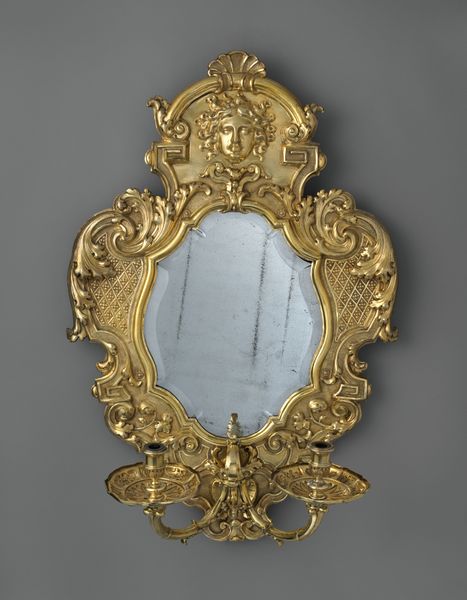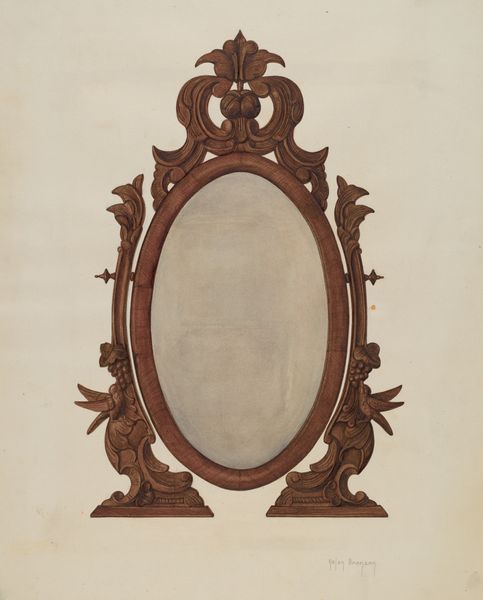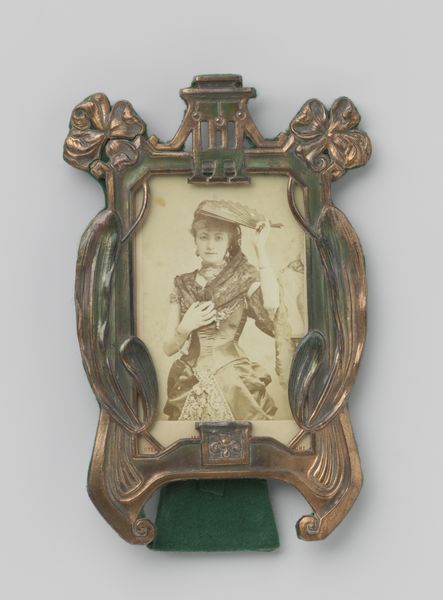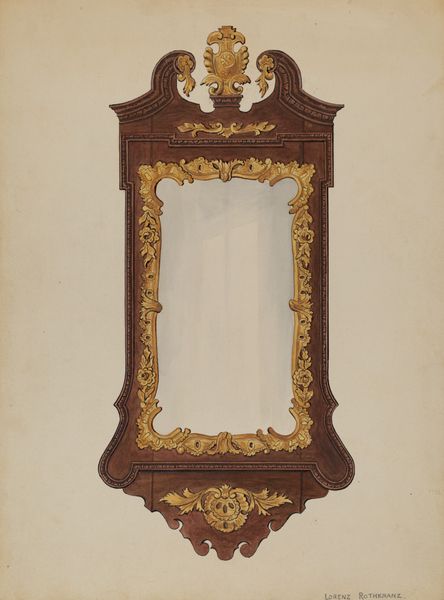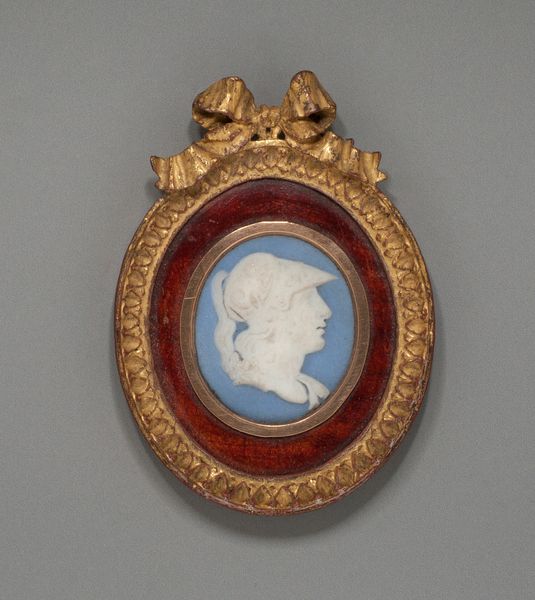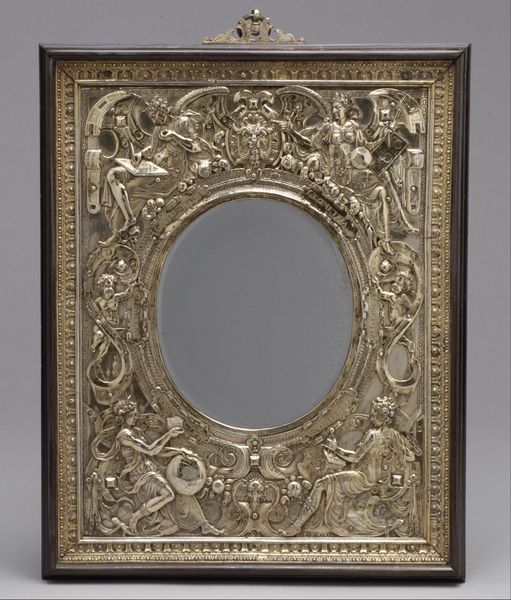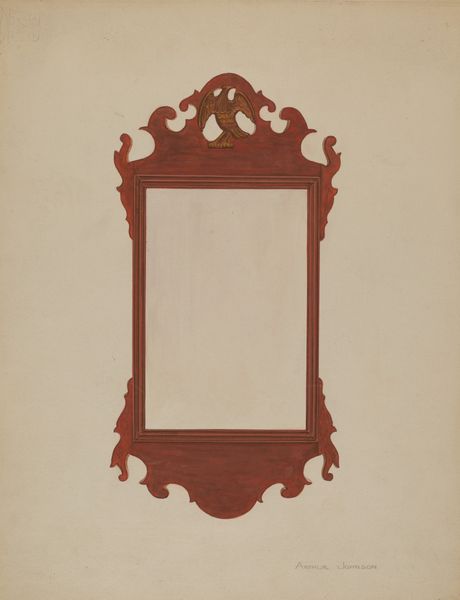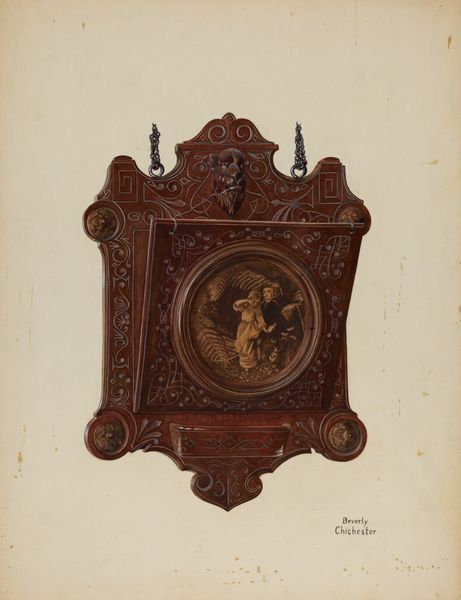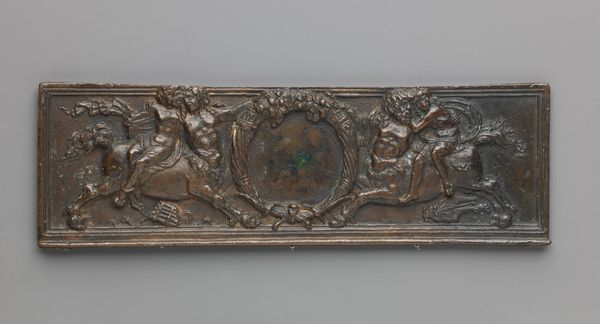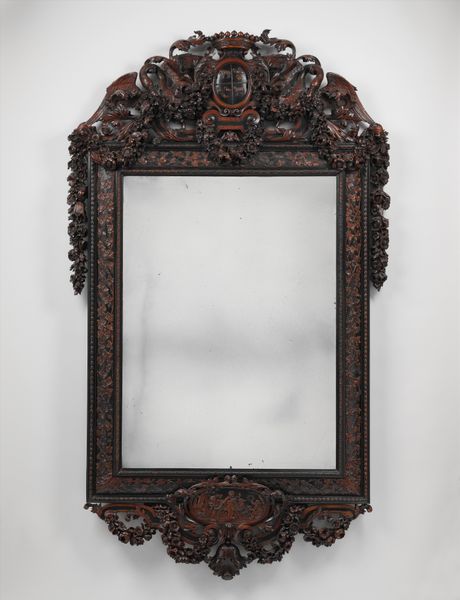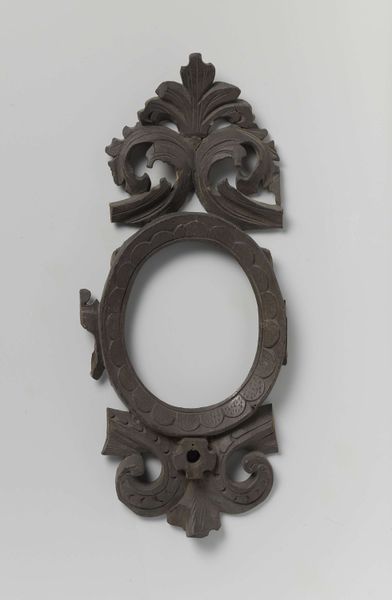
carving, photography, wood
#
portrait
#
carving
#
photography
#
wood
#
genre-painting
#
miniature
Dimensions: height 322 mm, width 245 mm, depth 20 mm
Copyright: Rijks Museum: Open Domain
Curator: I’m struck by the delicate balance in this piece. Here we have what is titled "Portrait of Johann, Johanna and Auguste Borrasch," a miniature photograph from 1860 set within a spectacularly ornate carved wood frame. Editor: My eye immediately goes to the frame itself. It's almost overpowering, a riot of floral carvings that seem to both protect and perhaps…imprison?… the quiet formality of the photograph. Curator: Yes, it’s a fascinating tension, isn't it? The photographic portrait suggests the burgeoning rise of the middle class, eager to document and display their status, while the hand-carved frame, such a lavish and time-consuming undertaking, speaks to a different kind of aspiration. It makes you wonder about their social mobility. Editor: The photograph itself seems rather posed and rigid. Look at the children, Johann and Auguste. Their faces seem serious. They are confined by very formal clothing too, not a hair out of place! Curator: Quite. It’s so typical of early portrait photography, which required long exposure times. Yet that stillness, combined with the sepia tones, gives it such an ethereal quality, wouldn’t you say? The father and mother exude a presence, however posed they seem, but the children…it is as though we have caught them, still for a fraction of a second. This glimpse across time and generations feels somewhat intrusive, like peering into a private moment. Editor: I agree. And I wonder about the display of wealth here; could this object be a sort of show of societal stature and political belonging? An indicator that this family, this Borrasch family, belongs here in the culture of the mid-19th Century. Curator: Possibly. The deliberate contrast between the modern technology of the photograph and the very traditional craft of wood carving definitely creates that impression. Editor: Well, thinking about it, both elements serve as testaments to the human need to capture and immortalize ourselves, albeit through vastly different methods and socio-economic lenses. One relies on technological precision, and the other on artistic skill. It’s thought-provoking. Curator: Indeed, the melding of those qualities encapsulates something fundamental about the Victorian era’s drive for progress and self-definition.
Comments
No comments
Be the first to comment and join the conversation on the ultimate creative platform.

